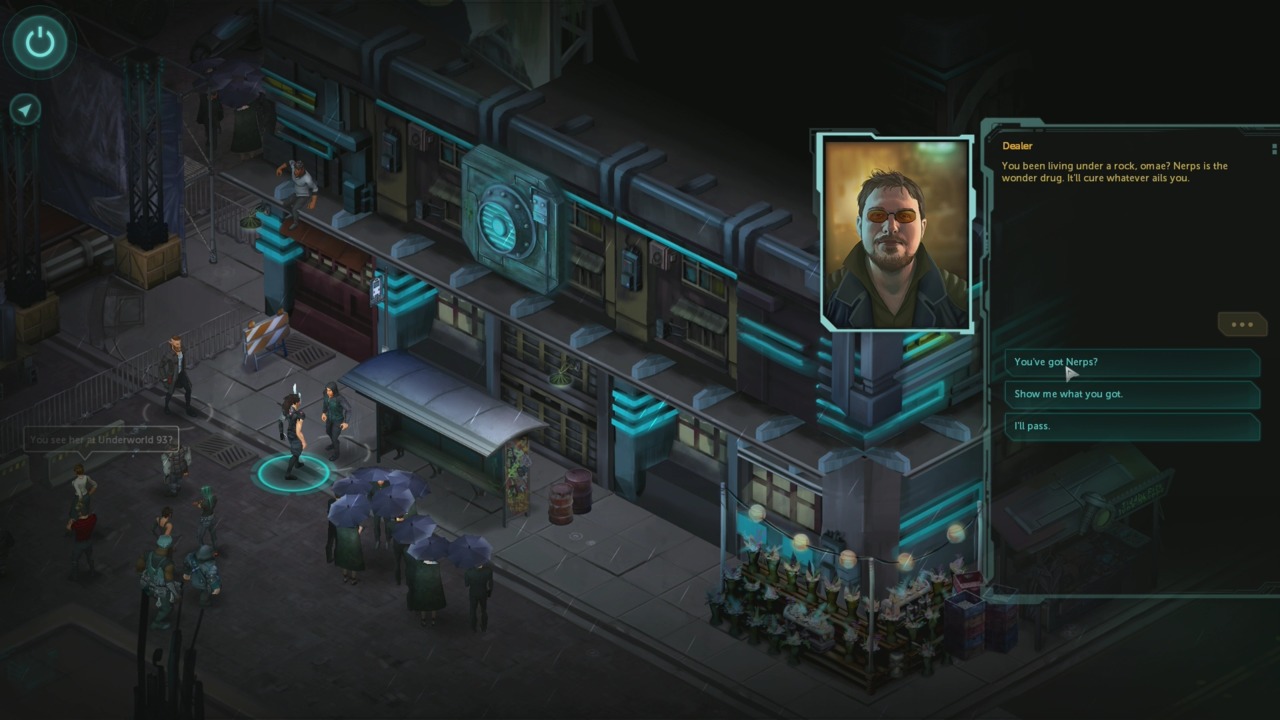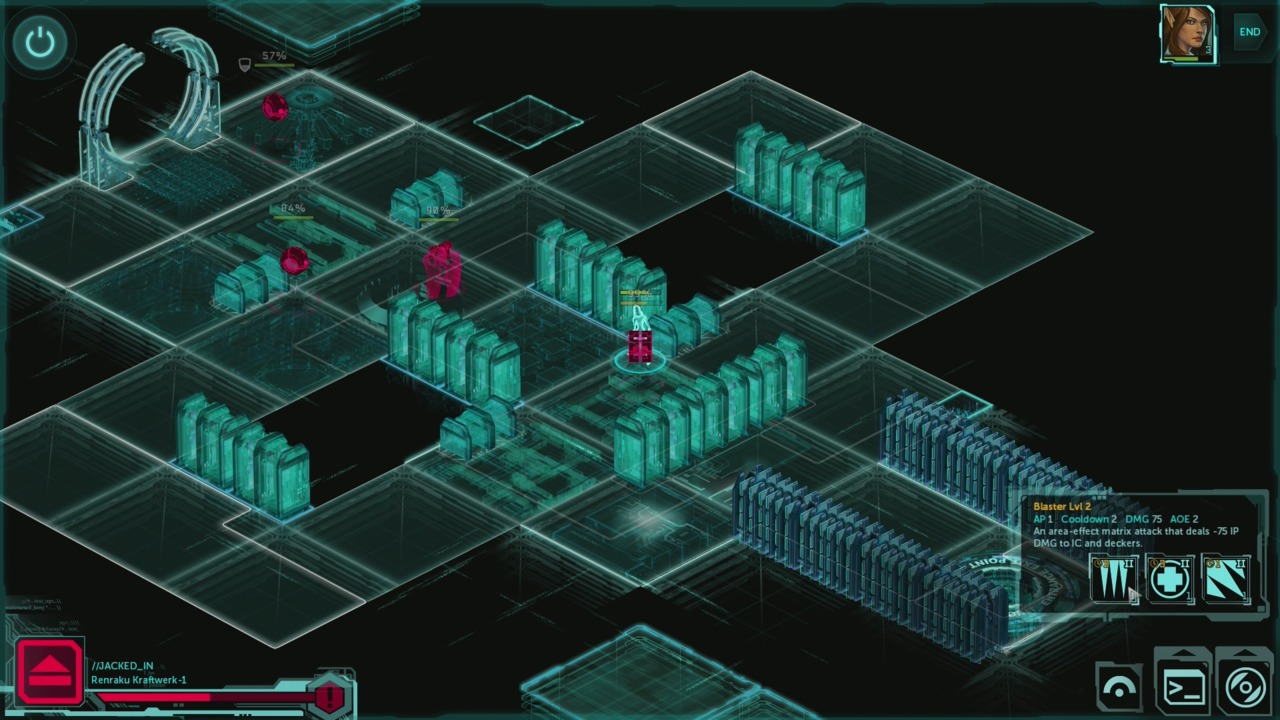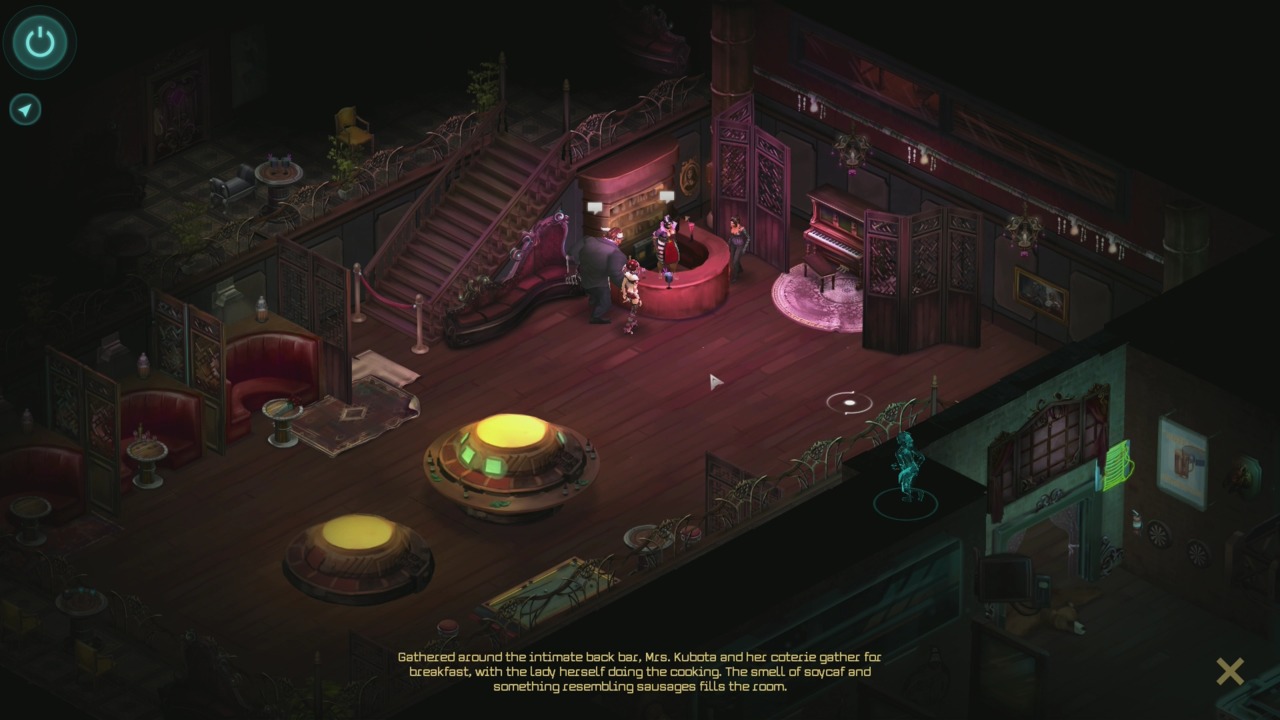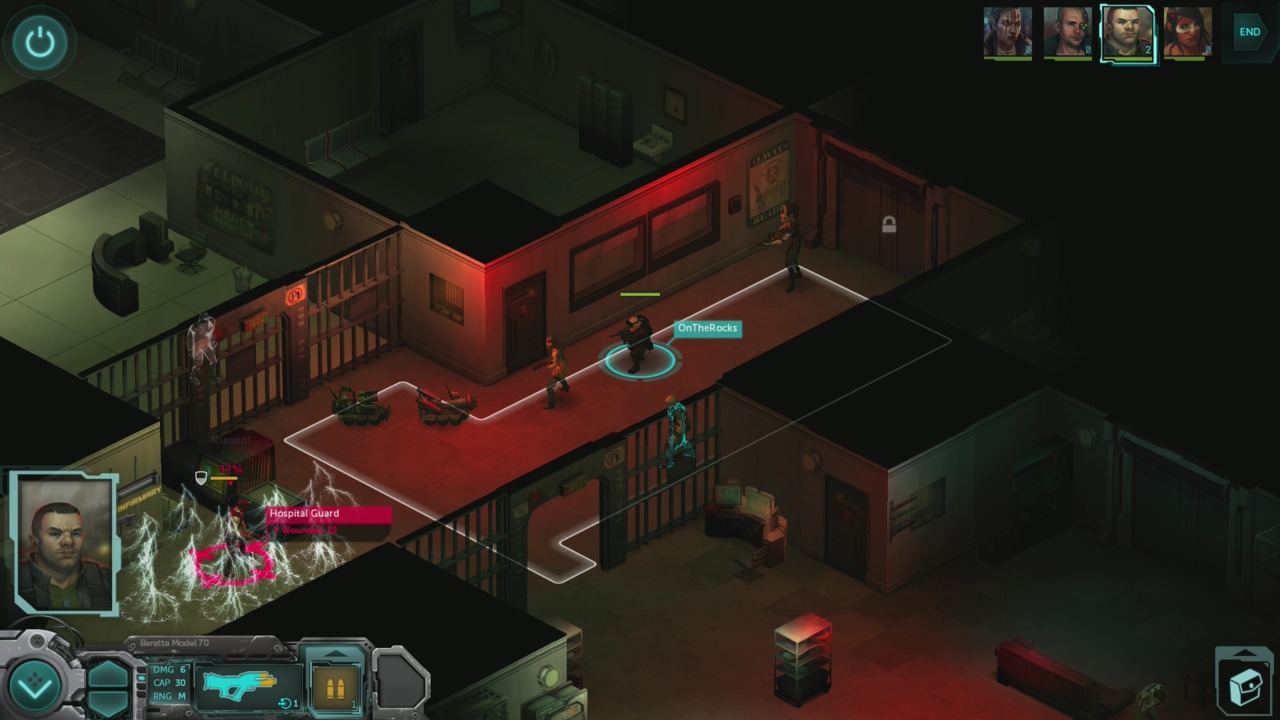Shadowrun Returns' cyberpunk vision of Seattle is simultaneously vibrant and unwelcoming. Hanging lamps and towering totems might inspire you to take a closer look, but the deeper you dig, the harsher the truth becomes. A railcar repurposed as a food truck seems quaint, but street thugs stink up the place. There's only one way to snuff out their stench, and that's to force the meatbags to soak in puddles of their own blood.
This run-down city is more of a backdrop than a focus in this strategic role-playing game, but once you've seen the central mystery through to its sinister end, it's the setting that stands above all else. The graphics engine is modest, but handsome hand-drawn backgrounds bring to life a world of remarkable style with a unique mix of past and future. In a house of ill repute, an old-fashioned upright piano and a rococo chaise lounge share space with holographic advertisements and a cybersurgery facility. Old-world rickshaws stand next to state-of-the-art motorcycles; magical talismans and bright neon signs hang on the same walls. Trolls and elves roam this world of bionic implants and crime syndicates, and these seemingly disparate parts merge into an eclectic and flavorful world. Shadowrun Returns makes you want to unlock Seattle's twisted secrets.
Unfortunately, you get the run of only a small corner of this world. Shadowrun Returns is not structurally vast, but instead ushers you down a linear path over the 12 hours or so it takes to reach its end. In fact, given the amount of time you spend speaking to Seattle's singular residents--and unraveling the murder mystery that drives the narrative--it often feels as much like a point-and-click adventure as it does an RPG. There is no voice acting, so expect to do a lot of reading, presuming the story draws you in. And there's no reason it shouldn't: your investigation has you crossing paths with a number of memorable characters with stories of their own to tell.

Among these folks is the madam Mrs. Kubota, who is fiercely protective of her girls. She chides one, accusing her of distracting her from her business, only to wipe away tears of worry the moment the girl is out of earshot. Another key character is a wide-grinning coroner who levels with you about the local cops, saying, "McKlusky wants the Ripper in a cell, sure, but he couldn't care less if it takes another dozen murders." While there are some banal lines to contend with, there is plenty of evocative dialogue like this, and few wasted words. Familiar characters and scattered allusions should make fans of the original Shadowrun video games (and the tabletop RPG) happy, but you needn't have a past relationship with this world to understand it.
As robust as the setting is, Shadowrun Returns feels like the start of something great rather than a gold mine of role-playing treasure. There are some side quests to take, but completing most of them is a matter of taking a few minutes of extra time during your main mission, or inspecting the only corner of the map there is to inspect. There's a minimum of exploration. You might find a grenade in some cranny, but there's little reason to veer off the beaten path--and few chances to do so in any case. The game guides you through its story with little fuss, leaving you to wonder what lurks within the graffiti-covered tenements, and to ponder the tensions that would lead to "Purge the Metahumans" being scrawled on the walls. Shadowrun Returns is a morsel, not a meal.

That isn't to say there aren't vital choices to be made. If you need to enter a warehouse, you might bribe your way in, or ask a prostitute to work her charms on a guard. There's little subtlety to these options, however. If you have enough affinity with a certain faction (corporation or gang, for instance), you choose the appropriate dialogue, and you're set; if you've got the cash, you pay the bribe, and the matter is resolved. It's a bare-bones approach to familiar role-playing tropes--so bare, in fact, that you could gain access in multiple ways in a few moments' time. Dialogue takes a similar approach. While your choices might have some effect on the outcome of the scene, your responses are more about authoring the tale of your own character than steering events toward differing destinations.
Shadowrun Returns' primary depth and replay value come from its skill tree, an intimidating array of magical abilities, hacking skills, firearm aptitudes, and more. Some of Shadowrun Returns' archetypes are understandable enough. Mages fling magic around, for instance, while riggers use mechanical drones to assist them in combat. Some skills, such as those involved with "decking," require a bit more thought, at least for those unfamiliar with the Shadowrun universe. Deckers hack into the matrix--that is, a parallel virtual universe where you fend off digital foes rather than fleshy ones. Luckily, even if you don't fancy spending karma on the related skills, the story has you exploring the digitized dimension multiple times, and you can always add a decker to your party if you prefer.

You can spend karma, i.e., skill points, however you like, though you'll likely home in rather quickly on how you want to build your avatar and ignore a large portion of the tree. You then put your talents to work on the battlefield, alongside a few friends the mission sends with you, or with up to three henchmen you hire to protect your backside. The turn-based combat is simple to comprehend; it's the details that make it enjoyable.
Consider this: your shaman can bring spirits to life from specified summoning points. The resulting abomination may be covered with multiple wailing heads, but more importantly, it commands the attention of nearby ghouls or guards. Given the opportunity, you can then mow down the resulting crowd of mercenaries with your shotgun, since it damages enemies adjacent to your target. (But be warned: it damages adjacent friendlies, too.) In the meanwhile, a supporting mage can improve your chances of landing shots, or grant you an additional action point per turn, while your decker rushes through the matrix, flinging energy at cyberdemons. On normal difficulty, Shadowrun Returns isn't hard, but the skill system is involved enough to give battles variety and momentum.

The challenge may be surmountable, but that doesn't mean you won't make mistakes--and in Shadowrun Returns, mistakes can be costly. In certain missions, you might spend a host of karma, engage in a litany of dialogue, and then face your foes in battle, only to lose 30 minutes or more of progress. Shadowrun Returns does not allow you to save anywhere you like, and its checkpoint system doesn't always favor your convenience or sanity. The aggravation rises if your demise is exacerbated by some odd game behavior, like a big insect refusing to budge from a doorway, or what looks like a cover spot not actually providing cover.
Shadowrun Returns is not just a role-playing game, but a creation platform, so its ongoing value isn't based only on the core content, but on promises of user-generated adventures and offerings from the development team. There are already player creations to peruse in varying states of completion, such as prop packs, tilesets, and even a remake of the SNES Shadowrun game. Intrepid imagineers will see beyond the included content and into a future of cyberpunk tales galore. But at present, Shadowrun Returns is an enjoyable role-playing game with the scent of a classic, if not the essence.